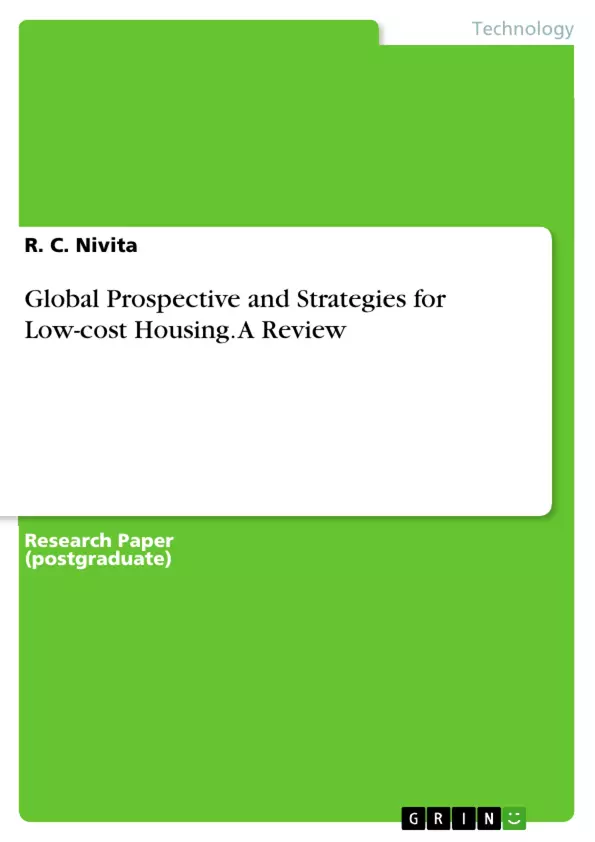The provided text discusses various aspects related to affordable housing, housing delivery alternatives, housing scarcity, land tenure, housing finance, urban planning, vocational and skill development in construction, real estate regulations, infrastructure development, and financing strategies. It emphasizes the need for comprehensive research and analysis to address housing challenges faced by low-income populations and marginalized communities. The text mentions the proportion of individuals residing in slums within Thailand, which is estimated to be 7%. It highlights the differences in economic prosperity and development between East Asian countries (such as China, Japan, and South Korea) and Southeast Asian countries. It also discusses the role of housing finance entities like Commercial Banks, Housing Banks, and Mortgage Institutions in different Asian countries.
Inhaltsverzeichnis (Table of Contents)
- Abstract
- Introduction
- Strategies for low-cost housing
- Current scenario for low-cost housing
Zielsetzung und Themenschwerpunkte (Objectives and Key Themes)
This study aims to analyze the relationship between housing delivery alternatives and housing scarcity, focusing on low-income populations. It examines the challenges related to land tenure, housing finance, and the development of construction skills in the context of affordable housing.
- Housing delivery alternatives and their impact on housing scarcity
- Challenges associated with land tenure and housing finance
- Role of vocational and skill development in construction
- Strategies for promoting affordable housing in developing countries
- Impact of global financial crises and urban planning on housing affordability
Zusammenfassung der Kapitel (Chapter Summaries)
- Abstract: This section provides an overview of the text's main focus, including discussions on affordable housing, housing delivery alternatives, land tenure, housing finance, and skill development in construction. It emphasizes the importance of research and analysis to address housing challenges faced by low-income populations.
- Introduction: This chapter introduces the research objective, which is to investigate the connection between housing delivery alternatives and housing scarcity. It highlights the problem of housing scarcity in Thailand and discusses the varying degrees of economic prosperity and development between East Asian and Southeast Asian countries. The chapter also explores the role of housing finance entities in different Asian countries.
- Strategies for low-cost housing: This section focuses on strategies to improve the capacity of marginalized communities by advocating for participatory decision-making processes and analyzing legal frameworks related to real estate investments. It emphasizes the importance of vocational and skill development in the construction industry and highlights the challenges faced by the workforce.
- Current scenario for low-cost housing: This chapter examines the current efforts to train construction workers and addresses the skills gap between the workforce and the labor market. It highlights the importance of skill development initiatives, sustainable urbanization, and the role of regulatory and policy initiatives in the housing and real estate sector.
Schlüsselwörter (Keywords)
This text focuses on key themes like affordable housing, housing delivery alternatives, housing scarcity, land tenure, housing finance, urban planning, vocational and skill development in construction, real estate regulations, infrastructure development, and financing strategies.
- Quote paper
- R. C. Nivita (Author), 2022, Global Prospective and Strategies for Low-cost Housing. A Review, Munich, GRIN Verlag, https://www.grin.com/document/1367901



